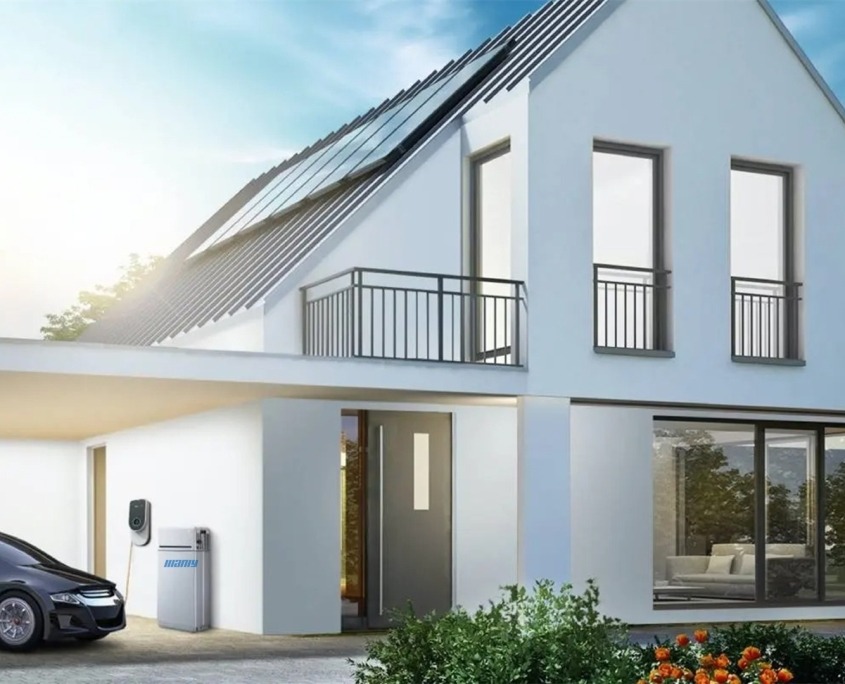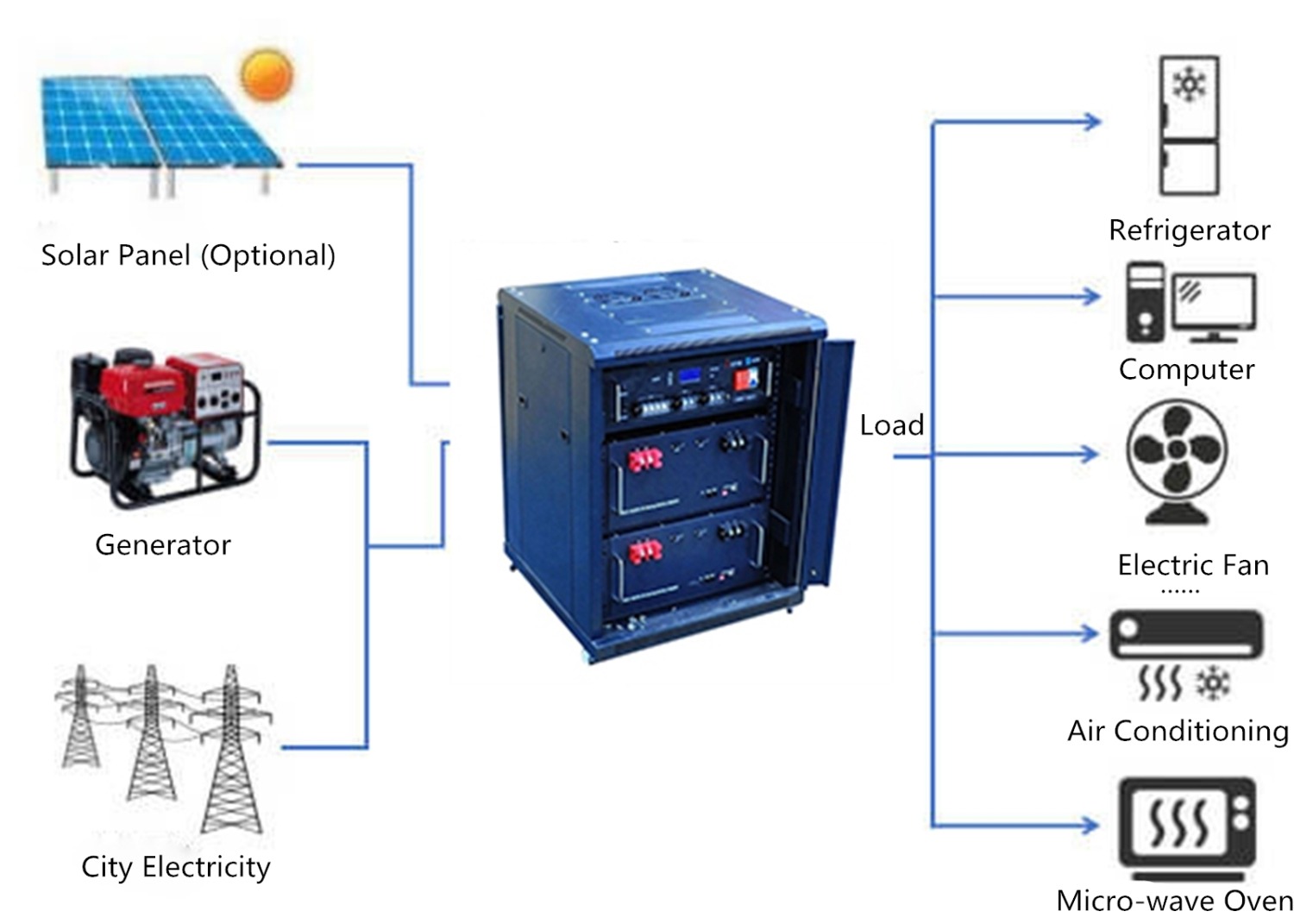More Products
EU Residential Energy Storage Outlook: 4.5 GWh of New Additions in 2023
In 2022, the growth rate of residential energy storage in Europe was 71%, with an additional installed capacity of 3.9 GWh and a cumulative installed capacity of 9.3 GWh. Germany, Italy, the United Kingdom, and Austria ranked as the top four markets with 1.54 GWh, 1.1 GWh, 0.29 GWh, and 0.22 GWh, respectively.
In the mid-term scenario, it is projected that the new deployment of household energy storage in Europe will reach 4.5 GWh in 2023, 5.1 GWh in 2024, 6.0 GWh in 2025, and 7.3 GWh in 2026. Poland, Spain, and Sweden are emerging markets with great potential.
By 2026, it is expected that the annual new installed capacity in the European region will reach 7.3 GWh, with a cumulative installed capacity of 32.2 GWh. Under a high-growth scenario, by the end of 2026, the operational scale of household energy storage in Europe could reach 44.4 GWh, while under a low-growth scenario, it would be 23.2 GWh. Germany, Italy, Poland, and Sweden would be the top four countries in both scenarios.
Note: The data and analysis in this article are sourced from the “2022-2026 European Residential Energy Storage Market Outlook” published by the European Photovoltaic Industry Association in December 2022.
2022 EU Residential Energy Storage Market Situation
The situation of the European residential energy storage market in 2022: According to the European Photovoltaic Industry Association, in the mid-term scenario, it is estimated that the installed capacity of residential energy storage in Europe will reach 3.9 GWh in 2022, representing a 71% growth compared to the previous year, with a cumulative installed capacity of 9.3 GWh. This growth trend continues from 2020 when the European residential energy storage market reached 1 GWh, followed by 2.3 GWh in 2021, a 107% year-on-year increase. In 2022, more than one million residential in Europe installed photovoltaic and energy storage systems.
The growth of distributed photovoltaic installations forms the basis for the growth of the household energy storage market. Statistics show that the average matching rate between residential energy storage systems and distributed photovoltaic systems in Europe increased from 23% in 2020 to 27% in 2021.
The rising residential electricity prices have been a major factor driving the increase in residential energy storage installations. The energy crisis resulting from the Russia-Ukraine conflict has further pushed up electricity prices in Europe, raising concerns about energy security, which has promoted the development of the European residential energy storage market.
If it weren’t for battery bottlenecks and shortages of installers, which limited the possibility of meeting customer demand and caused delays in product installations for several months, the market growth could have been even greater.
In 2020, residential energy storage systems just emerged on Europe’s energy map, with two milestones: the first-time installation of more than 1 GWh of capacity in a single year and the installation of over 100,000 household energy storage systems in a single region.
Residential Energy Storage Market Situation: Italy
The growth of the European residential energy storage market is primarily driven by a few leading countries. In 2021, the top five residential energy storage markets in Europe, including Germany, Italy, Austria, the United Kingdom, and Switzerland, accounted for 88% of the installed capacity. Italy has been the second-largest residential energy storage market in Europe since 2018. In 2021, it became the biggest surprise with an annual installation capacity of 321 MWh, representing 11% of the entire European market and a 240% increase compared to 2020.
In 2022, Italy’s new installed capacity of residential energy storage is expected to exceed 1 GWh for the first time, reaching 1.1 GWh with a growth rate of 246%. Under a high-growth scenario, this forecast value would be 1.56 GWh.
In 2023, Italy is expected to continue its strong growth trend. However, after that, with the end or reduction of support measures like Sperbonus110%, the annual new installation of residential energy storage in Italy becomes uncertain. Nevertheless, it is still possible to maintain a scale close to 1 GWh. According to the plans of Italy’s transmission system operator TSO Terna, a total of 16 GWh of residential energy storage systems will be deployed by 2030.
Residential Energy Storage Market Situation: United Kingdom
United Kingdom: In 2021, the United Kingdom ranked fourth with an installed capacity of 128 MWh, growing at a rate of 58%.
In the mid-term scenario, it is estimated that the new installed capacity of residential energy storage in the UK will reach 288 MWh in 2022, with a growth rate of 124%. By 2026, it is expected to have an additional 300 MWh or even 326 MWh. Under a high-growth scenario, the projected new installation in the UK for 2026 is 655 MWh.
However, due to the lack of supporting schemes and slow deployment of smart meters, the growth rate of the UK residential energy storage market is expected to remain stable at the current level in the coming years. According to the European Photovoltaic Association, by 2026, the cumulative installed capacity in the UK would be 1.3 GWh under a low-growth scenario, 1.8 GWh in the mid-term scenario, and 2.8 GWh under a high-growth scenario.
Residential Energy Storage Market Situation: Sweden, France and Netherlands
Sweden: Driven by subsidies, residential energy storage and residential photovoltaics in Sweden have maintained steady growth. It is projected to become the fourth-largest residential energy storage market in Europe by 2026. According to the International Energy Agency (IEA), Sweden is also the largest market for electric vehicles in the European Union, with a 43% market share of new electric car sales in 2021.
France: Although France is one of the major markets for photovoltaics in Europe, it is expected to remain at a relatively low level in the next few years due to a lack of incentives and relatively low retail electricity prices. The market is projected to increase from 56 MWh in 2022 to 148 MWh in 2026.
Compared to other European countries of similar scale, the French residential energy storage market is still very small considering its population of 67.5 million.
Netherlands: The Netherlands is still a notably absent market. Despite having one of the largest residential photovoltaic markets in Europe and the highest per capita solar installation rate on the continent, the market is largely dominated by its net metering policy for residential photovoltaics.




